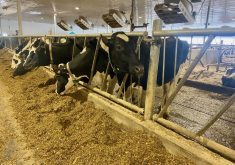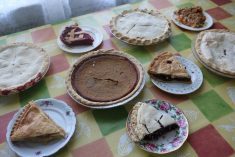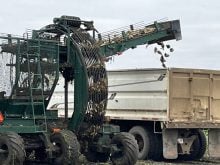The month of June has been filled with reunions and other get-togethers. Some of these events took us to little towns and resorts on the Prairies that at first seem unassuming. If you take time to inquire and look around, you may find all sorts of unique ventures.
At Elbow, Sask., a friend arranged a tour of a business where beautiful hinged adjustable piano stools are made. We also toured an electronics business in the former school that makes circuit boards for all sorts of clients.
We were told someone in town makes and sells great quantities of fingernail dryers. At the Saskatchewan Women’s Institute conference in Maple Creek, Sask., I enjoyed a talk by Dorothy McCuaig who has a business making soaps and body lotions from hemp oil and other natural products. She runs her Foot Fresh business from her home in Eastend, Sask.
Read Also

Accurate accounting, inventory records are important
Maintaining detailed accounting and inventory records is not just a best practice; it’s a critical component of financial health, operational efficiency and compliance with programs like AgriStability.
For one of the reunions I brought this potato potluck dish from the new Atco Blue Flame Kitchen, Romancing the Flames cookbook. Since the weather wasn’t good for barbecuing, we put all the ingredients in a roaster and baked it in the oven. It cooked fine that way, too.
Bacon and cheesepotato packets
8 cups sliced peeled 2 L
potatoes,1/4 inch/ 0.5 cm thick
1 cup thinly sliced 250 mL
green onions
1 cup shredded 250 mL
cheddar cheese
1 cup shredded 250 mL
mozzarella cheese
1/3 cup freshly grated 75 mL
parmesan cheese
1 /4 cup butter, melted 60 mL
1/2 pound bacon, 250 g
cooked and crumbled
11/2 teaspoons seasoned 7 mL
salt
1/2 teaspoon freshly 2 mL
ground pepper
Combine all ingredients in a large bowl. Dividing equally, place potato mixture in centres of two large pieces of foil. Bring edges of foil together to form a packet and close all edges with tight double folds. Cook over medium heat on barbecue, turning packets over frequently, for 45-50 minutes or until potatoes are tender. Serves eight.
Tapioca pudding
Dear TEAM: I was wondering if you could find a good recipe to make tapioca pudding using the large tapioca, like the pudding served in Bonanza restaurants. Some packages don’t even have a recipe on them. – A. W.
Dear A.W.: Yes, it is hard to find recipes that use the large tapioca. No doubt it is because of the extra time it takes to cook it. Richard Sax, author of Classic Home Desserts, suggests that the nicknames for large tapioca of fish eyes, frog eyes or freshman’s tears don’t help its reputation. This cookbook gives this information about tapioca.
Tapioca is ground from the root of the starchy cassava plant, which is also called manioc and sometimes tapioca plant. Native to Africa, where cassava is a staple starch, the plant grows in several tropical regions.
There are two types available:
- Whole or pearl tapioca requires soaking in cold liquid until it softens, often overnight, before cooking.
- Quick cooking tapioca has been ground into small pellets that need no presoaking. It cooks in minutes.
The process of running whole tapioca through a commercial-size coffee grinder to make it less lumpy when cooked was developed in the mid-1890s. It was first sold as Tapioca Superlative and later as Minute Tapioca. The company that produced it took on the name Minute Tapioca Co. in 1908, and became part of General Foods that same year.
Quick-cooking tapioca is used for puddings or as a thickener for fruit pies. It is less starchy than cornstarch or flour. Its slightly nubby texture works best with berry pies whose texture is more compatible with the tapioca’s grain.
Tapioca is gluten-free and a good thickener for those on a gluten-free diet. Keep in mind 1/4 cup (60 mL) whole tapioca equals 11/2 tablespoons (22 mL) quick-cooking tapioca.
It is a treat to have a tapioca pudding made with the large tapioca. I’ve used this recipe clipped from a tapioca package several years ago.
Tapioca custard
1/3 cup large tapioca 75 mL
3/4 cup cold water 175 mL
11/2 cups milk 375 mL
2 eggs
1/3 cup sugar 75 mL
1/4 teaspoon salt 1 mL
1/2 teaspoon vanilla 2 mL
Soak tapioca six hours or overnight in water in covered container. Do not drain. Add milk. Cook in covered double boiler over simmering water until tapioca is clear and tender, two to three hours, stirring occasionally. Beat eggs with sugar and salt. Add a little of the hot mixture to the eggs. Blend. Add the egg mixture into the hot tapioca, stirring well to blend. Continue cooking until egg thickens, about 15 minutes. Stir frequently. Remove from heat and add vanilla. Serve warm or chilled. Makes four servings.
Banana chip nutrition
Nutritionally, banana chips are closer to potato chips than the fruit. One ounce (28 g) has about 150 calories, nearly 10 grams of fat and often lots of sugar. The fat comes from the oil (usually coconut) in which the chips were deep-fried. Sugar is usually added, since the chips are made from bananas that are picked green, before the starch turns to sugar.
Banana chips contain a modest amount of potassium and a few other minerals. This shouldn’t spoil your image of dried fruits, such as apricots, apples or prunes, which are not fried. These are nutritious, low-fat, though high-calorie snacks.
Laundry spinners
Dear TEAM: I have a Scarpf Laundry Spinner that was purchased in the 1960s from a firm called Strada in Regina. This spinner was made in West Germany. I would like to know if these are still available and if so where I could buy one. I have found that the spinner cuts drying time in the dryer by half or more depending on the material being dried. – T.R., Munson, Alta.
Dear T.R.: After inquiring at Strada in Regina and other new and used appliance dealers, I’m sorry to say I haven’t been able to locate a store where you can buy spin dryers. The company Scarpf didn’t come up on my internet search, either.
However, on the internet is a site where you can purchase one type, called Spin-X. It is listed at $339.95 plus $59.95 shipping to Canada. If you’re interested in that you could call 888-334-0213 or e-mail Spinx@ev1.net.
I was told spin dryers have been phased out because new washers spin at faster rates and do the same thing. Some washing machines also have an extra spin cycle.
Alma Copeland is a home economist from Elrose, Sask., and one of four columnists comprising Team Resources. Send correspondence in care of this newspaper, Box 2500, Saskatoon, Sask., S7K 2C4 or contact them at team@producer.com.














